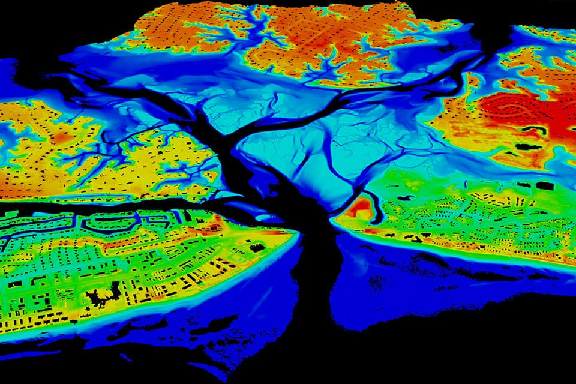You’ve probably heard of LiDAR technology, but what is it? Simply put, LiDAR is a remote sensing technology that uses laser pulses to map out the surface of the earth. It’s often used in conjunction with GPS to produce high-resolution maps. But what can LiDAR do for you? In this blog post, we will explore the many applications of LiDAR technology and how it can be used in your industry roulette online. From mapping forests to measuring soil erosion, LiDAR has a wide range of potential uses. Read on to learn more about this exciting technology and what it can do for you.
What is LiDAR?
LiDAR is an acronym for Light Detection and Ranging. It is a remote sensing technology that uses light in the form of a pulsed laser to measure ranges (variable distances) to the earth. The technology is used extensively in aircraft and satellites for mapping and surveying purposes, as well as in robots, automotive applications, and industrial engineering.
How does LiDAR work? A LiDAR instrument sends out short pulses of laser light and measures the time it takes for the pulses to bounce back off of objects. The distance to the object can then be calculated based on the speed of light and the known time delay. The data collected by a LiDAR system can be used to create extremely accurate three-dimensional (3D) models of objects or terrain.
What are some applications of LiDAR? One common use of LiDAR is in self-driving cars, where the technology can be used to create a 3D map of the road and surrounding environment. This information can then be used by the car’s computer system to navigate safely. Other potential applications include using LiDAR to map forest ecosystems, study archaeological sites, or assess disaster damage.
What are the different types of LiDAR?
There are three main types of LiDAR: topographic, airborne, and mobile. Topographic LiDAR is used to create detailed maps of the ground surface. Airborne LiDAR is used to measure features in the atmosphere, such as air pollution or atmospheric winds. Mobile LiDAR is used to measure features on the move, such as vehicles or pedestrians.
How does LiDAR work?
LiDAR is an acronym for Light Detection and Ranging. It is a remote sensing technology that uses light in the form of a pulsed laser to measure ranges (variable distances) to the Earth. LiDAR technology has been used extensively for topographic mapping and is also becoming increasingly popular for use in atmospheric physics, climate research, and geodetic surveys.
How does LiDAR work?
The basic principle behind LiDAR is simple: a laser beam is emitted from a sensor, hits an object, and bounces back to the sensor. The time it takes for the light pulses to travel there and back can then be used to calculate the distance to the object. This process can be repeated very quickly, allowing LiDAR systems to collect large amounts of data very quickly.
One of the key advantages of LiDAR over other remote sensing technologies is its ability to penetrate through atmospheric conditions such as clouds, smoke, and dust that would otherwise block or reflect other types of electromagnetic radiation (such as visible light or radar). This makes LiDAR ideal for applications where seeing through obscurants is important, such as monitoring air quality or studying vegetation canopy structure.
What are the benefits of LiDAR?
There are many benefits of LiDAR technology. For starters, LiDAR can be used to create highly accurate 3D models of objects and landscapes. This makes it an ideal tool for surveying, mapping, and navigation applications rivernilecasino.com. Additionally, LiDAR can be used to measure the height of tall objects, such as trees or buildings, with great accuracy. This information can be used in a variety of ways, such as determining the best placement for solar panels or assessing the risk of flooding from a nearby river.
LiDAR data can also be used to create virtual reality (VR) environments. This allows people to explore real-world locations without actually being there. VR applications can be used for training, education, or simply entertainment. For example, students could use VR to explore a historical site or tour a factory before it is built.
Finally, LiDAR technology is constantly improving and evolving. New applications and uses for LiDAR are being discovered all the time. As the technology becomes more accessible and affordable, we will likely see even more amazing things that it can do!
How can I use LiDAR?
LiDAR can be used in a variety of ways, from mapping the contours of the land to measuring the height of buildings. It can also be used to create 3D models of objects or landscapes.
Conclusion
LiDAR technology is an incredibly powerful tool that can be used for a variety of different applications. Whether you’re looking to map an area or get a better understanding of your surroundings, LiDAR can provide you with the data you need. If you’re interested in learning more about this technology and how it can benefit you, be sure to check out our other articles on the subject.

